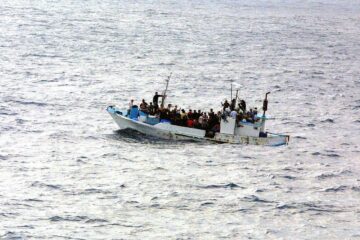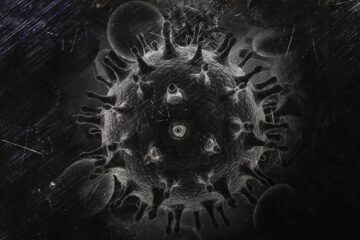![]()
Introduction:
The world is roughly divided into exploiters and the exploited. As the world is evolving, it is turning more and more ruthless. The humankind has created several rules and limitations for the smooth working of the society. These rules and limitations set the distinction between right and wrong. It binds us with morals and ethics and the concept of leadership. Sometimes, the powerful crosses these lines of morality and rightness and exploits the weak or helpless. One of the ways of exploitation is human trafficking. An illegal form of trade can be termed as trafficking. Human trafficking is illegal as it directly violates the human rights of the victims. The legal norms in India is yet not strong enough to eradicate this disease of human trafficking.
Kinds of Human Trafficking
Human trafficking can be of various types. Clutches of this evil trade is in every strata of the society. Most of these crimes are done under disguise and undercover. It is very easy for an unaware and ignorant person to become a victim of this crime.
Following are a few types of commonly found human trafficking:
- Sexual Exploitation:
This is one of the most common types of human trafficking. Young women and children generally fall prey to this kind. Victims are exploited in various ways sexually.
- Prostitution or Escorting: India has a major chain prostitution racket. Though still illegal, prostitution and escort services are very much part of the society. Victims are generally forced to sell their bodies almost daily for consideration. They also face many atrocities like physical violence and are injected or force consumed hormones and other narcotic substances.
- Pornography: This is another way of exploitation sexually. They are forced to work/ act in pornographic films or video.
- Labour Exploitation:
The economy is mostly unstable. Many people struggle in finding enough labour for work. In such situations many resort to the way of labour exploitation. In this form of exploitation, victims are forced to work excessively for less or no remuneration. Such work is usually done under threat of violence. The victim often face intimidation, violence, withholding important documents like visa and passport. Labour exploitation can be found in any work sector. It may be unseen to the common man’s eyes but it is very much prevalent.
- Domestic Servitude:
Domestic servitude is similar to labour exploitation. The only difference between the two is that domestic servitude occurs in homes for personal work of the exploiters. The victims that fall prey to this kind of exploitation are mostly women and children. They are kept as house-help for less or no more remuneration. They are most of the time assaulted physically and sometimes sexually. Victims are made to work under threat, torture or punishment.
- Forced Marriage:
This type of human trafficking is very prevalent in India. However, it is dying very slowly and gradually due to awareness and literacy growth. The most common causes of forced marriage involve the abduction of young girls or women through force or false promises. In many cases, girls are sold by their own family in consideration of a fixed amount. The biggest reason for the existence of forced marriage is a huge margin in sex-ratios of some states or villages. In many villages, girl-child is still considered a curse and are either aborted or killed at birth. This is why men fail to find women in their village for marriage. Thus, they resort to exploitation through forced marriage. Victims are usually made to work mercilessly and are assaulted both physically and sexually.
- Child Trafficking:
It is a very common kind of human trafficking. Children are often abducted by force or luring for exploitation. Child traffickers use children for various purposes like act of beggary, prostitution, forced employments etc. my children are exported to foreign countries. As per reports of the National Human Rights Commission (NHRC), every year almost forty thousand children are abducted and trafficked in India. Many children are also used as human soldiers and used in anti-national conflicts.
- Organ Harvesting:
Organ trafficking or harvesting has been a universal issue since a very long time. People are trafficked solely so that their organs are stolen. These organs are then used illegally for transplant.
Indian Laws
- Indian Penal Code: The Indian Penal Code (IPC) lays down penalties for various offences. It was enforced in 1860. Section 370 and 370 A of IPC addresses the crime of human trafficking. It deals with sexual exploitation aspect of human trafficking and awards punishment of maximum 10 years of imprisonment and fine for the same. The section also includes cross-border prostitution.
- The Constitution of India: The Indian constitution also, prohibits human trafficking. Further, it grants natural human rights such as the right to life and personal liberty and right to freedom. The fundamental rights laid down under the Indian constitution also guarantees the right to freedom from exploitation.
- The Juvenile Justice (Care and Protection of Children) Act: This act lays down the legal confirmation that every person under the age of 18 shall be considered as a child.
- The Scheduled Castes and the Scheduled Tribes (Prevention of Atrocities) Act: It is observed that people from backward classes easily fall prey to exploitation owing to ignorance, unawareness and illiteracy. This Act is for their protection against exploitation. It includes atrocities like forced and bonded labours.
- Immoral Traffic Prevention Act: This Act was bought into existence as a part of an international convention against immoral trafficking. the convention was signed in New York in the year 1950. This Act deals with prohibition of several forms of human trafficking like prostitution, forced domestic and commercial labour, organ harvesting etc. It also provides penalties and punishments for such crimes.
- Transplantation of Human Organs Act (THOA): This Act was specially designed for banning trafficking of organs for commercial use.
Conclusion
Human Trafficking is more than just a crime. It is a disease that is invisible but very much prevalent in the entire world. It is a gross exploitation of natural human rights of the citizen. Thus, it must be eradicated from the root level. There are many laws in papers in India but unfortunately, none stand strongly against this crime. Government must make stringent regulations regarding investigations and convictions in these cases. Victims shall be treated with care and privacy; they must be protected at all times. Specialized unit forces must be constituted and resourced for anti-trafficking activities. Finally, these case must get provision of appearing before fast-track courts.



0 Comments